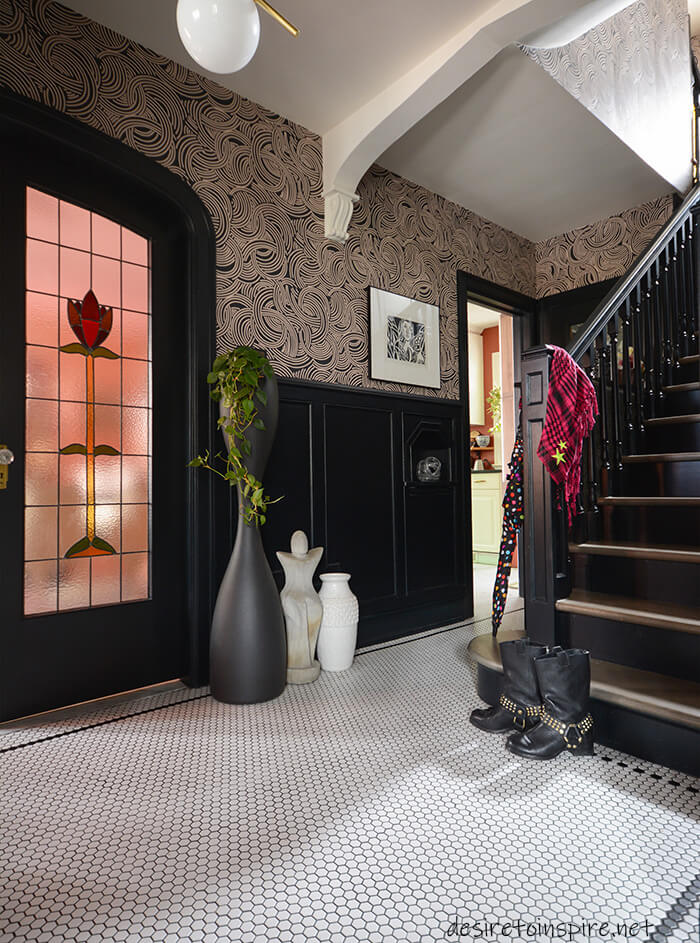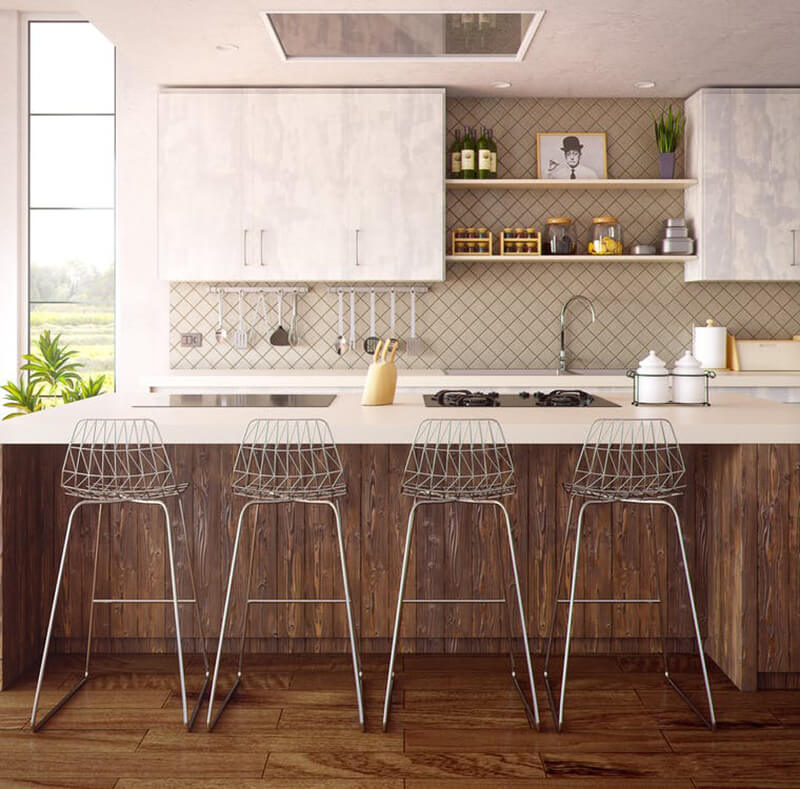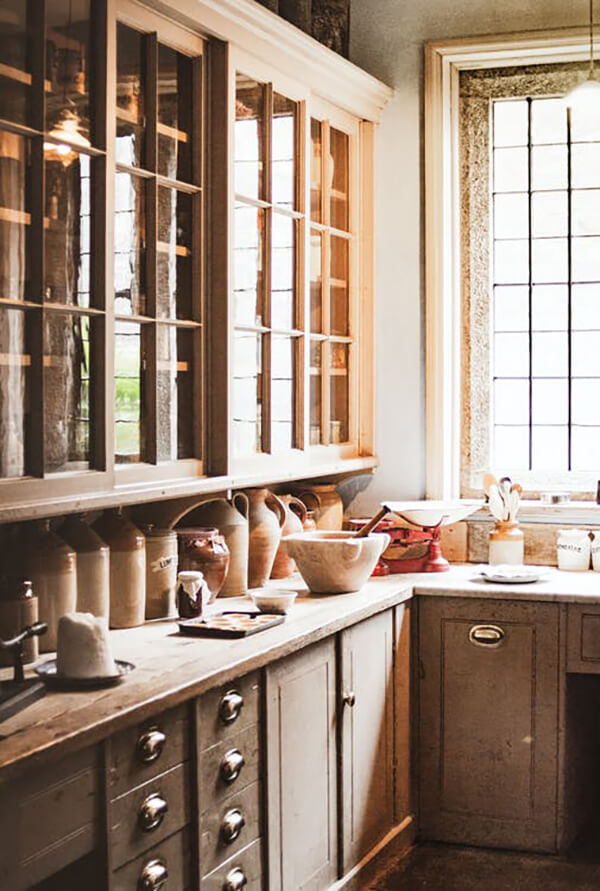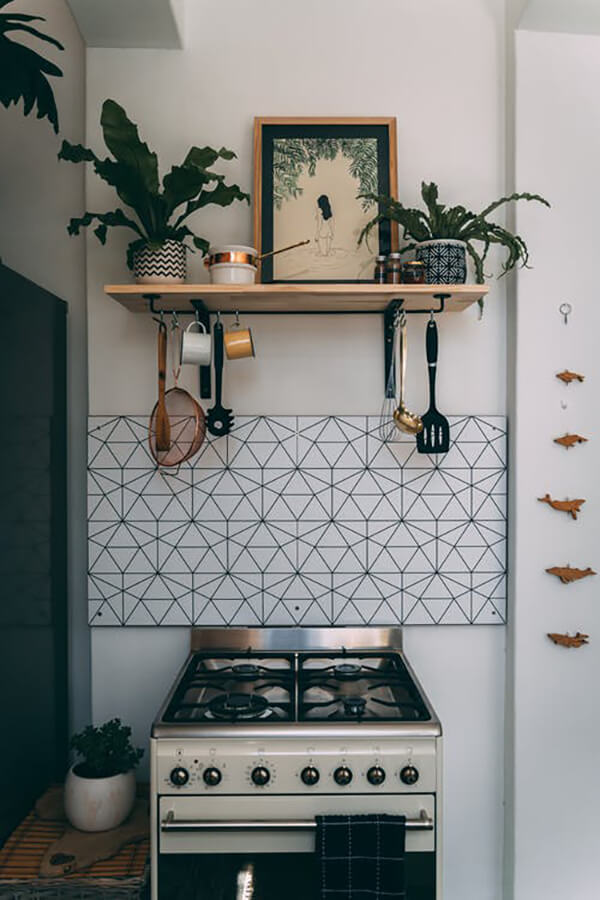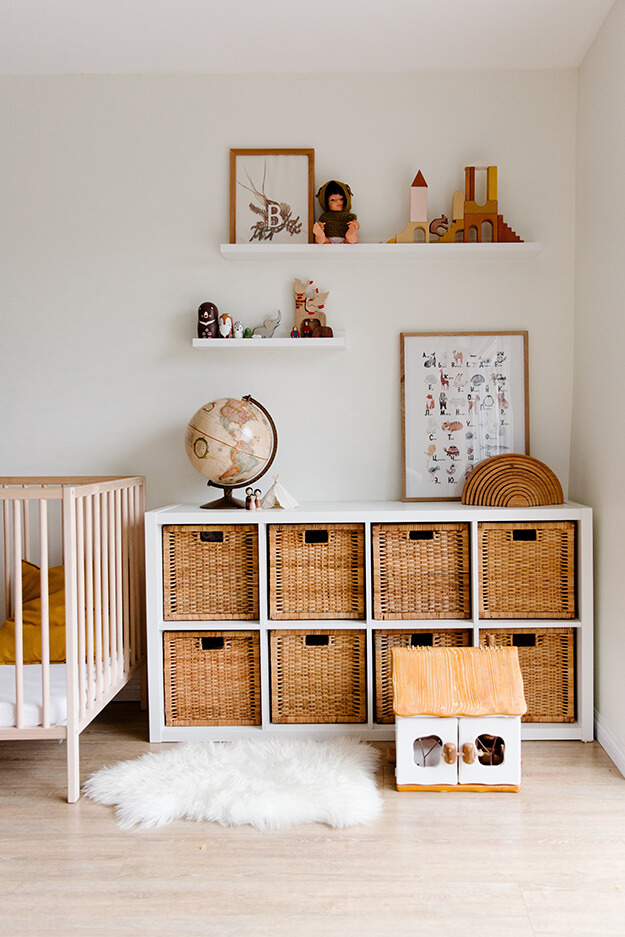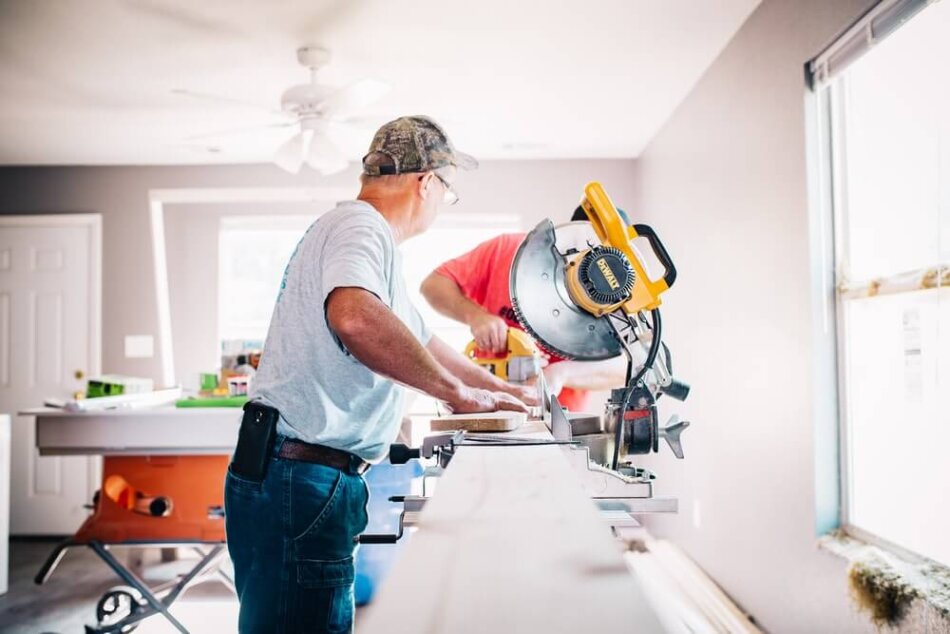How Wallpaper Could Be The Perfect Solution To Your Design Problems
Posted on Sat, 25 Jun 2022 by Guest
When it comes to decorating your home, there are many directions you can go. Some people prefer neutral colors, some make a statement with furniture pieces and art, and others choose more subtle changes like lighting or accessories.
While I’m certainly not against any of these options, today I want to talk about the lesser-used, but equally as effective, option of wallpapering. It’s an easy solution that can instantly add style and beauty to any room. Here are some ways wallpaper for homes can help you solve design problems in your home:
Add Color to A Small Space
Wallpaper is a great way to add color to a small space. This can be especially useful in the bathroom, kitchen, and bedroom. In these rooms, it’s important to avoid clutter but also consider how you want your room to feel. If you are going for an earthy vibe in your kitchen, adding wallpaper with some rustic elements will give you the look and feel that you desire.
The colors on the wall can also affect how large or small your room feels so think about what color combinations work best for each space before committing yourself fully!
Make a Room Feel Larger
Wallpaper is an absolute must-have when it comes to making a small room look larger. This is because wallpaper offers the unique ability to make an entire wall seem like one big piece of art. You can use patterned paper to create a focal point or stripe design, which will draw your eye right into the center of the room and make it feel larger than it is.
Create a Focal Point
When it comes to design, the best thing you can do is create a focal point. It’s what gives your room its personality and sets the tone for how everything else will be arranged. You could use wallpaper to create this focal point in three ways: hanging it on an accent wall or two; using it to cover an entire room; or using it as a subtle background behind furniture or art.
If you want the wallpaper itself to be your focal point, think about how much space you have available and whether any other things in your room might detract from its impact, such as windows. If not, go ahead and cover as much of one wall as possible with patterned paper with bold colors—it’ll look great when lit up by daylight!
Add Texture to a Room
Wallpaper can add texture to a room in several different ways. Wallpaper can be textured on one side or both sides, and it comes in many different patterns that mimic natural materials such as wood, stone, and metal. Some wallpapers have interesting textures that look like fabric or brick.
Unify A Hodgepodge of Furniture and Decor
If you have a hodgepodge of furniture and decor, there are ways to unify them with the right wallpaper. Using a similar color scheme, pattern, style, texture or material can help pull your space together. If you aren’t sure where to begin when narrowing down what to use as a common thread in your design scheme, then study the details of each item and pick out one or two things that stand out most. Your wallpaper should reflect these qualities.
For example: You have an eclectic mix of mid-century modern furniture and classic French chandeliers hanging above your dining room table but also just fell in love with a bold graphic print from our Avant-Garde collection for its clean lines and modern vibes—not quite sure how all three will work together? Focus on utilizing elements like neutrals, like gray, with pops of color throughout your home so that each piece has its own distinct aesthetic without being too busy or overwhelming ____just enough contrast.
Cover Up Imperfections in Walls
Wallpaper can help hide imperfections in walls. If there are any imperfections in the wall, like a spot where the paint has chipped, wallpaper is a great solution to cover it up. Wallpaper also works well if your walls are too smooth and shiny, or have an unnatural texture that doesn’t match your decorating style.
Wallpaper as a design feature can also be used to create something unexpected for people walking into your home for the first time!
Wallpaper is an easy way to make an impact in your home
Wallpaper is a great way to add color, texture, and a focal point to a room. It’s an easy way to make a big impact in your home without having to do any heavy lifting.
Wallpaper can make a room feel larger than it is because of its ability to reflect light patterns throughout the space. This makes wallpaper perfect for rooms with low ceilings that need some visual relief from their narrow dimensions.
Wallpapers come in so many different patterns and designs you can choose something that will complement your design style while still being unique enough not to feel out of place among other decor pieces in your home or office. Peel and stick floral wallpapers are a great way of adding a warm feeling to a room, and their ease of installing and removing makes them highly convenient.
Use Wallpaper to Solve all Kinds of Design Problems
The best part about wallpaper is that it’s temporary, so you can experiment with different designs and colors until you find the one that’s right for your home. It’s also a cost-effective way to transform a space in just a few hours!
Wallpapers add character to any room in the house: kitchens, bathrooms—even bedrooms! A bright accent wall can give even an otherwise plain-looking room some life so that not only does everything look good together but also feels cohesive too; no need for extra accessories when everyone knows what their role in this house should be because everything else already matches perfectly well.
So, head on to Love vs. Design and get yourself the perfect wallpapers for your walls. If you think you might need any help selecting a wallpaper pattern, do not hesitate to contact support and ask for help.
Kitchen remodeling is a crucial home improvement consideration
Posted on Wed, 13 Apr 2022 by Guest
Did you know that Kitchen remodeling ranks as the number one most popular renovation space in the USA and Canada? So when you decide to renovate your home, and you’re not quite sure where to begin – the kitchen is it. It will create an enhanced lifestyle and uplift the asset value simultaneously.
Kitchen renovations can range from around $50,000 to over a hundred thousand, depending on your vision, location, and complexity. Indeed, numerous enticing options embrace space-age metals, exotic marbles, startlingly beautiful synthetic materials, sleek cabinetry, and appliances from built-in coffee makers to sub-zero refrigerators. And that’s only half of it.
The architecture of the space enters the equation in a significant way. For example, do you knock down walls, shift things around, steal footage from an adjacent area? Or are you okay with the structure as is? These decisions are vital because they inevitably impact electricals, plumbing, and lifestyle disruption.
This article aims at helping you navigate this project seamlessly, with minimum hassle and maximum final satisfaction.
What are the primary kitchen remodeling considerations?
The best way of tackling any renovation, most notably the kitchen, is to focus on three things:
- Your budget
- Making sure you don’t over-capitalize
- Getting a specialist kitchen remodeler into your corner
The above three factors integrate because one influences the others, and vice versa. For example, contracting the wrong construction partner can quickly jettison the budget you had in mind and create a showpiece that may look amazing but is overpriced for the neighborhood. So, it’s a balancing act, and choosing a skilled kitchen remodeler near you to partner with your family in this venture can make all the difference.
The right kitchen remodeling contractor for you
We want to start with this because it can pave the way for everything else. Renovation professionals should be licensed and insured as a minimum qualification. Unfortunately, that’s not nearly enough. There’s no substitute for doing your due diligence, and the best place to begin is by scanning reviews of the company’s past clients. When you hire someone for a project reflecting many options, it’s imperative to ensure that experience and undoubted competence are in the mix.
- First, access entities near your community. You want to work with experts who know your demographics’ ins and outs and have connections to suppliers that can deliver materials quickly.
- The best way is to identify a marketplace that has secured the membership of:
- Remodelers
- Roofers
- Window installers
- HVAC contractors
- In other words, home improvement platforms across a broad spectrum that deliver recommended specialists.
- Companies like Home Advisors, Angie, and Directorii are reputable in this arena.
- The mentioned ones above back up their referrals with monetary guarantees and underline that they’ve already completed the heavy lifting due diligence.
- It should save you substantial frustration and aggravation.
Here’s the checklist for your shortlist
The quotes should come rolling once you press the start button. Then, you have to select the one to take you on the remodeling journey. Here are some pointers to assist in settling on your ideal renovation partner:
- You must get a sense that they try to save you money, not push you to spend more.
- At the same time, if the contractors believe your budget is too low, hear them out. Determine whether or not their points are valid or just trying to squeeze more out of a job.
- A negative signal is when the initial suggestions surround complicated space configurations. Severe architectural adjustments are frequently unnecessary and can cost thousands before you even begin on the upgrades and aesthetics. Let alone that it will disrupt your routine with dust and debris for perhaps weeks.
- We find that prudent remodelers begin by making the best of what they have. It may mean accepting a little less than perfection, but that can get lost in the added features if they’re compelling enough.
- Discuss the remodeler’s supplier contacts. Many of them have preferential buying status that can work to your benefit. Moreover, ascertain they will not restrict you in selecting brands and materials.
- Spend substantial time on lighting. Kitchens, of all places, need to look bright when you want it that way or mood-centric at the appropriate moments. When remodeling, emphasize the placement of concealed lights and contemporary light fittings suitable for the space. Pay attention to how your referees respond to that and the ideas they put forward.
- After a kitchen remodel, there’s nothing more devastating to a homeowner than discovering that odors linger after a heavy cooking session. After all, aside from the room functioning as a social center for friends and family, food preparation is the main show. Bring ventilation into the conversation early on because it’s one of the most vital functional aspects of the project.
- Once the build-out is in motion, things will come streaming into your home – tiles for the floor, cabinets, slabs, faucets, and appliances (only some examples):
- Who’s taking an inventory to ensure what’s delivered matches the quantities and specs?
- Secondly, address the same going into safe storage and remaining secure from theft.
- Talk about schedules and time horizons, and ask what happens if completion extends from the original deadline. Professionals in the renovation arena have these issues covered and all those mentioned above.
The important thing about interviewing recommended contractors is letting them know you’re not a pushover or ill-informed. Any building project is a two-way thing, balancing the views of the client and the artisan without unnecessary conflict to arrive at mutually acceptable solutions.
All the good stuff
The steps outlined above shouldn’t detract from your vision of a modern kitchen with all the latest innovations on the market. Of course, budget plays into this, but once agreed, request an overview of the fixtures, appliances, and materials that qualify. There’s no point in wasting time visiting supplier showrooms if their inventory is too expensive.
Sometimes you have to stay with existing appliances or repaint cabinets instead of replacement. On the other hand, some fantastic synthetics upgrade the kitchen at a fraction of the price of imported exotics. Even the very wealthy are opting for the latter these days. Here are the main categories that come under the spotlight, offering alternatives across a broad spectrum:
Appliances and conveniences
- Microwaves
- Ovens
- Hoods
- Refrigerator/ Freezers
- Dishwashers
- Instant purified hot water
- Automatic garbage disposal
- Built-in coffee-makers and espresso machines
- Double sinks
- Multi-purpose faucets
- Toaster ovens
Materials
- For floors
- Hardwood (often not waterproof but great aesthetics and colors)
- Tile (also great aesthetics and colors but can be slippery when wet)
- Vinyl and laminate – an excellent mimic of hardwood; challenging to tell the difference in the upper price range.
- Cork – A definite aesthetic appeal, relatively inexpensive. Not as durable as other materials described.
- Concrete is trendy these days for that retro look. Also inexpensive, but it doesn’t suit all styles.
- Travertine and marbles – A classic look that never dates. A classic look that never dates. A genuinely luxurious feel but is an expensive option based on exotic imports from Italian material suppliers.
- For countertops and splashbacks:
- In massive demand for new and remodeled kitchens, Quartz doesn’t need sealing. Expensive.
- Granite – offered in thousands of natural colors and ingrained patterns, shiny or matte finishes. Generally more porous than Quartz but not significantly so. A wide price range, depending on how exotic you go.
- Marble – same comments as above for flooring. It has a timeless look, is softer than granite and Quartz, and is quite porous. It is susceptible to scratches and stains, but some people are happy to live with it as a trade-off for aesthetics.
- Porcelain is probably the fastest growing in popularity. The beautiful finishes and color variations are stunning, alongside unsurpassed durability. Affordability slots in at a much higher rating than the natural materials mentioned above.
- Wood (cherry, maple, hickory, walnut, teak, or mahogany) – A great looker that lends warmth to the room (versus the colder feel of granite). You must be ready to accept cuts and indentations on the surface if designed for cutting and chopping.
- Appliances:
- Slate – provides a low-gloss, matte finish for the sleekest appearance you can imagine. It’s also fingerprint-resistant, durable, and easy to clean.
- Stainless steel – prevalent, modern, integrates with any design. Easy to maintain and a sturdy material from every angle. Also available in black steel to give the room that extra edge.
- Miscellaneous – offering less expensive options in a range of colors and creating different moods (depending on the design of the remodel).
- Lighting
- Ambient lights merge with natural light to create a room ambiance, mostly recessed into the ceiling.
- Task lighting for brightness where you really need it and dispel shadows cast by the recessed installations.
- Under Cabinet and Accent Lighting brightens dark corners and adds to the room’s overall feel.
Conclusion
To reiterate, your remodeling partner should be by your side every step of the way in this journey. Experienced pros have seen it all and dealt with reputable supply sources. If you have an architect involved, they should fit in like a hand in a glove. Still, many renovators have enough architectural skills to cover all the bases as a one-stop solution. Start with a credible marketplace as the best avenue to get referrals that resonate with you in an arrangement embracing all the above.
New Addition to the Family? Here are a Few Budget-Friendly Nursery Ideas
Posted on Thu, 10 Mar 2022 by Guest
Bringing home a newborn child can be both an exciting and a heartwarming experience for any new parent. And though you’ll likely want to keep your child by your side in the beginning, eventually, they’ll need a space of their own. And this is where the nursery comes in.
Across the country, you can find a plethora of creative and nurturing nursery themes. And many of these are actually inexpensive to implement. But where do you start and how do you create a nursery that you (and your child) will love?
The truth is, you can use some basic and affordable elements to craft your nursery. And with a bit of time and little innovation, this can actually become a rewarding DIY project in itself.
There’s nothing like building your own nursery from scratch. And if you already have an existing room, you’ll be able to remodel it to your liking using inexpensive elements.
Here, we’ll explore a few nursery ideas that anyone can enjoy putting together.
Repurposing Old Furniture
As a new parent, you’ve probably already purchased a crib or a bassinet for your child. But your child’s room will need a few other elements to tie it all together. And you can easily utilize older pieces of furniture that aren’t serving any purpose around your home.
For example, some items to consider are listed below:
- Old dressers
- Small bookshelves
- Worn end-tables
- Old trunks
- Coffee tables
In any child’s room, you’re going to need a space for the assortment of clothing and diapers that you’ll likely be going through each day. And older dressers are perfect for a nursery project. You can sand these down and paint them however you like such as with soft pastel colors, or any theme that you feel is soothing and will make your child’s nursery comforting.
Additionally, old bookshelves can serve as spaces for children’s books, toys, stuffed animals, or anything else that you’d like to keep in your child’s room.
Space-Saving Designs
In recent years, many brands of furniture have been recalled due to the possibility of toppling over. And this has caused many parents to remove items such as tall dressers and bookshelves from their children’s rooms. And if you’re worried about this happening, using a space-saving approach can be a great alternative.
Perhaps all you want in your child’s room is a crib and a space for toys. If eliminating the dressers or any other furniture item which could topple and hurt your child is important to you, modifying your child’s closet is a great option.
For example, you could secure all of your child’s belongings inside an interior closet, or even place a dresser inside the closet and anchor it to the wall. Or, you could build a cubby storage system along the closet wall for storing toys, clothes, diapers, and the like.
Additionally, open trunks are great items that sit on the floor, perfect for toys or clothes that you’ll likely need to access often. And you won’t have to worry about toppling over.
Themed Nursery Rooms
When it comes to themes, parents could easily spend a fortune on buying accent pieces and furniture simply to create the perfect theme. But the truth is, most of the time you can do this all yourself for half of the cost.
For example, maybe you want a Bohemian theme in your child’s room. If this is the case, there’s no need to go out and buy hundreds of dollars worth of Bohemian accent pieces. Because at the end of the day, you can make all of this yourself.
If you want to create a theme, or add color to your nursery, put your own creativity to work. You can even design your own artwork such as framed sketches of your child, or even make handprints using your child’s hands as border trim for the nursery.
The possibilities are only limited by your imagination when it comes to the themes that you choose to implement in your nursery. But you’ll find that no matter what theme you choose, you’ll likely be able to do this all on your own without having to drain your savings account.
Though you’re probably more excited about having a new child to care for, creating your child’s nursery can be a fun project that you can truly sink into and make your own. And as you begin thinking of designs, remember that many designs and themes are actually very simple and affordable to do on your own.
Common Home Renovation Problems and How to Avoid Them
Posted on Tue, 15 Feb 2022 by Guest
If you have decided to renovate your home in the near future, it may benefit you to familiarise yourself with a number of common problems that you may encounter as well as how to avoid them.
It can be easy to assume that you will take the necessary precautions and, as a result, your home renovation will run smoothly from start to finish, but by retaining the following information, you can know what to expect ahead of time and increase the chances of your home renovation being a success.
Failing to do your research
If you are considering treating your home to a property-wide renovation in advance of relocating or just for you and your loved ones to enjoy, you must conduct thorough research ahead of time. This is especially important if you have little to no experience of undertaking a home renovation.
To ensure your home renovation runs smoothly from start to finish, you must research top-rated contractors in your local area and base your final decision on whether or not they align with your individual needs, wants, and goals as a homeowner. It may also benefit you to research your options before drawing up a rough guide of how you want your home to look when the entire project is complete.
Forgetting to sufficiently protect your flooring
If you are in the process of renovating your home, you must sufficiently protect your flooring to prevent any dirt, mud, or debris from being inadvertently carried into your home by external contractors or their machinery. To do so, cover your flooring with a thick yet breathable layer of material, such as adhesive film, tarpaulin, or newspaper, and readjust or reapply as necessary to continue protecting your flooring on an ongoing basis.
In addition to sufficiently protecting your flooring, it may also benefit you to contact a professional carpet cleaning company afterwards to rid your home of any bacteria or germs that may be hiding deep within the fibres of your carpet unknowingly – often dragged in by workmen’s boots, and heavy machinery.
Exceeding your predetermined budget
If you have carried out a number of home renovations throughout your lifetime, you will be familiar with how easy it can be to get carried away and exceed your predetermined budget. By monitoring and tracking your spending, however, you can protect your pennies and ensure you are only spending within the boundaries that you personally set for yourself ahead of time.
If you are in the process of planning an entire home renovation project in the coming months, it may benefit you to familiarise yourself with a number of common problems ahead of time as well as what you can actively do to avoid encountering them on a first-hand basis. This includes failing to do your research in advance, forgetting to sufficiently protect your flooring from the resultant effects of heavy footfall and machinery, and exceeding your predetermined budget by getting carried away and overspending. By finding out everything you need to know beforehand, you can proceed with confidence.
Modern ways to decorate your home for the holidays
Posted on Wed, 22 Dec 2021 by Guest
Do you love Christmas, but find that copious amounts of green and red and an army of Santa Clauses don’t work for your decor? Do you want to invest in accents that you can leave out all year? Keeping things simple doesn’t have to be boring!
Make your own rules and refresh your decor with metallics, beige, white and pops of black and copper to add interest and depth. Add texture through natural materials, metal and glass to elevate your seasonal decorating and make it stylish and chic. If you’re in the northern hemisphere, a modern look will bring the festive winter wonderland indoors without the cold; while down south, wooden elements give a coastal vibe for summer. Here’s 7 ways to add some sophisticated touches to your decorations.
1. Make first impressions count
The first place you welcome your guests is at your front door, so add seasonal cheer with a beautiful door decoration. Go big, but keep it simple – it doesn’t have to be flashy to make a statement. As with all modern decor, keep in mind that less is more. Choose a simple colour palette of green and black, or silver and gold and then use that to inform your decorating choices for the rest of your home.
2. Mix up materials
Wood, metal and glass are all great materials to work into your decorating. Wooden bead garlands, copper and brass stars and glass Christmas trees all add a touch of modern scandi to your home and are easy to source. Offsetting these with black and touches of deep green keep the modern theme going. Opt for geometric decorations, such as cones, stars, triangles and stylised reindeer, rather than more detailed, traditional shapes.
3. Deck the halls — modern style
Choose a gorgeous Christmas tree and make it the focal part of your living room, while keeping other decorations minimal. Let your tree shine and decorate it sparingly in colours that match your decor and tie in with your wreath. There’s no need to be limited to traditional Christmas colours! Wooden or monochrome decorations tipped with gold or silver add a luxe look without overwhelming your tree. If you want to go even more minimal, there are gorgeous LED-light branch trees in silver or gold that are a striking alternative to a traditional green, fluffy tree.
4. Light up your space
One of the most simple, but effective ways to decorate is by playing with lighting. At night, the glow of Christmas lights is cosy and festive without being overwhelming. There are so many gorgeous LED decorative features available these days. Choosing simple forms with lighted elements, such as woven cone trees for the mantle, dresser or coffee table, is a great way to bring Christmas into your house while keeping your look fresh. Don’t forget the outside of your house – twinkling fairy lights are an elegant but low-key way to add a hint of the holidays to your exterior.
5. Hang your stockings with care
Opting for modern decor doesn’t mean ditching your stockings! Beautiful Christmas stockings are a must for your family no matter what style of decor you choose. Make them a feature with a simple pattern in neutral colours, add a sparkle with lurex thread or opt for a chunky knit.
For those celebrating in the northern hemisphere, dress your mantle with lights and bare branches for a festive touch while the yule log burns – or create a makeshift mantle out of a sideboard or buffet. Showcasing family photos from past Christmases printed in black and white is a great way to personalise your decor. Think simple but striking, and don’t be afraid to pare back your decorations.
6. Dine in style
If you’re hosting a Christmas or holiday meal, dining in style with beautiful table decorations and dinnerware is a must. Start with matte black stoneware for an organic feel, then continue the gold or silver theme with fabric napkins and simple table decorations, such as small metal or porcelain trees or bare branches. Use tea lights or string lights to make your table an extension of your decor.
Get the party started with a luxe silver or gold bar cart filled with all your favourites for effortless entertaining with a touch of glamour. Use glasses and decanters with a hint of gold and silver to complete the look. An open bar cart will have you prepared for any thirsty guests and Santa might thank you for something stronger than milk too (are there rules on drinking and sleigh driving?).
7. Complete the look
Without turning every nook and cranny of your house into the North Pole, think about adding touches of Christmas to rooms where they’ll have the most impact. Small decorations in the powder room and kitchen will complete the look (without risking the Grinch’s ire!). Luxe throws – faux fur for those experiencing a winter Christmas and lighter materials for antipodeans – add depth to beds and sofas.
Homemade posters featuring quotes from favourite Christmas carols or books are a fun way to update your existing decor for the holidays with a personal touch. Even better, swap out photos or prints in existing frames to keep the cost down. Monochromatic or metallic Christmas cards can also be used as a low-budget way to bring Christmas art into your home.

